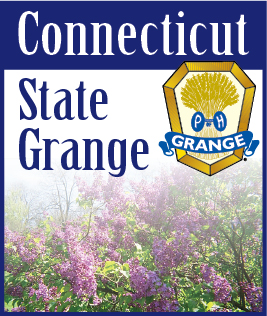| OCTOBER 19, 2014 -- Today’s global economy demands that every participant have access to reliable, high-speed Internet in order to attain a level playing field to actively participate in the virtual business marketplace. Although rural America constitutes 15% of our total population, it is these men and women and families who keep food on our tables, fuel in our cars and provide energy for our homes and businesses. We owe it to them to implement the infrastructure to provide broadband internet services. Americans living in rural areas still lack access to this vital resource.
Historically, rural areas have been the last to gain access to new conveniences. Broadband Internet, however, is not merely a convenience—it is essential to the business of agriculture, farming and ranching and nearly every other aspect of life in rural America. Rural communities are profoundly and adversely affected by poor access to high-speed Internet. Right now we have the chance to change that once and for all with appropriate reforms during Phase II of the Connect America Fund (CAF) plan; it’s up to the Federal Communications Commission to make the right choices.
There’s a lot at stake with the CAF initiative, so we must get it right; the consequences, good or bad, could stretch over decades. The National Grange has always advocated for updating rural infrastructure, as it did for the railroads and rural postal delivery, and now the emphases is with rural broadband Internet. Modern farming and ranching is like any other business; it relies heavily on technology and information. Dairy production and crop yields can be monitored and data shared in real time between different farms and the marketplace. Commodities prices can also be followed to help determine what crops to plant and when to harvest.
CAF was first developed in 2011, with the goal of connecting as many as 7 million un-served rural Americans by 2017 and all of the country’s 19 million un-served individuals living in rural areas by 2020; yet it still is not finalized and hasn’t even begun to be put into practice. CAF calls for $1.8 billion in funding, but how best to use this funding to effectively build out broadband infrastructure to rural areas is the real issue at hand. Regrettably, it seems significant changes need to be made to the existing plan during Phase II to deliver the most essential outcomes.
The plan is centered on more than doubling required download speed from 4 Mbps to 10 Mbps. That would be fantastic, but it won’t make a big difference if other related aspects of the CAF plan are not improved as well.
Consider the way in which broadband coverage is measured. Right now, “Census blocks” are used, and as long as part of the block has access, it is counted as being covered. Yet within each “block” there are households left without the service, perpetuating the digital divide for those individuals and families while keeping up the appearance of closing the gap in access. Higher standards and independent verification of different providers’ broadband coverage claims can ameliorate this problem.
Moreover, unlicensed, fixed Wireless Internet Services, or WISPs, are being treated as suitable alternatives to real facilities-based fiber infrastructure, not true. The FCC’s regulatory assumption is that a WISP provides reliable connectivity to an entire area, but that just isn’t accurate. Capacity can be very limited in these networks, and there are issues like line-of-sight (LOS) and spectrum interference. WISPs really aren’t acceptable as primary infrastructure, but can be useful in a supporting function.
Providers still need better incentives to build out the infrastructure to reach rural areas, the most isolated, and hard-to-reach areas. Connect America Fund (CAF) resources can be used to share some of the financial burden for those efforts. Providers should be held to elevated but reasonable standards and need enough flexibility to handle the unexpected hindrances that are bound to occur with a project like this.
Finally, let’s extend the planned funding period to a full ten (10) years to ensure this work is steadily and properly carried out.
Perhaps most important, our families and communities can be strengthened through better access and higher download speeds. Jobs can be created and local economies improved. Services that eliminate some travel over large distances in many rural areas, such as telemedicine and distance learning, can save energy, develop a better rural workforce and improve quality of life. The majority of our nation’s farmers and ranchers are small business owners, internet utilization informs them of new agricultural technologies to enhance their production thereby providing higher yields to meet our growing demand for food, fiber and fuel.
Rural Americans need and deserve equal access to top-notch broadband Internet service. As a fifth-generation Granger myself, I urge the FCC to enact the “right rules and regulations” to get the most out of the once-in-a-lifetime opportunity Connect America Fund (CAF) Phase II represents.
Joan C. Smith is President of Potomac Grange #1, Washington, DC. The National Grange, founded in 1867, is a nonprofit, nonpartisan fraternal organization that advocates for rural America and agriculture. With a strong history in grassroots activism, family values and community service, the Grange is part of more than 2,100 hometowns across the United States. |
